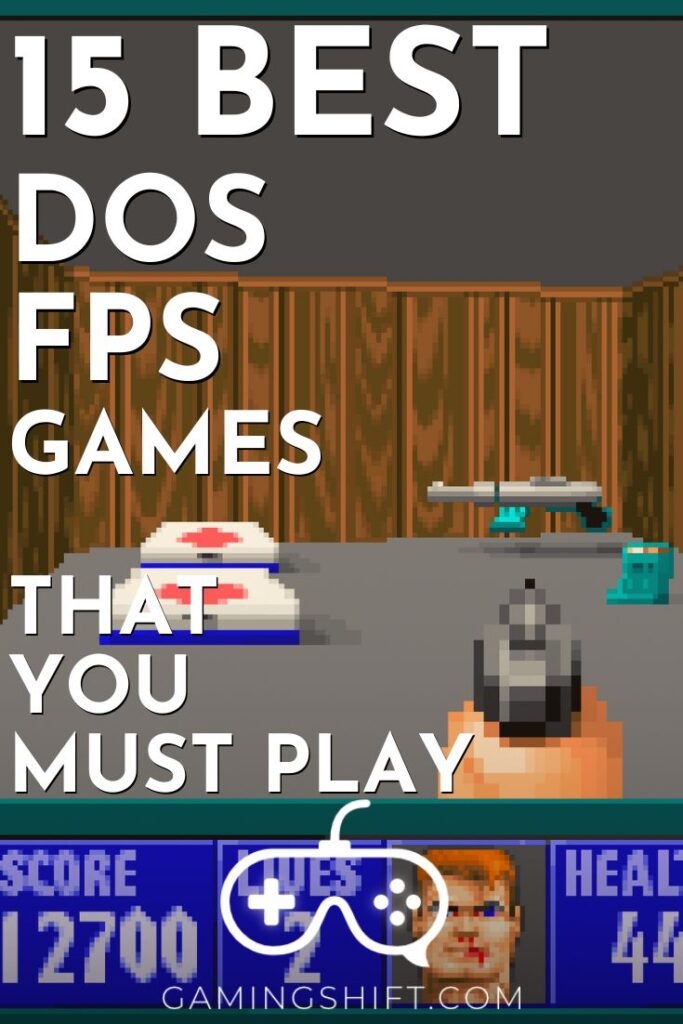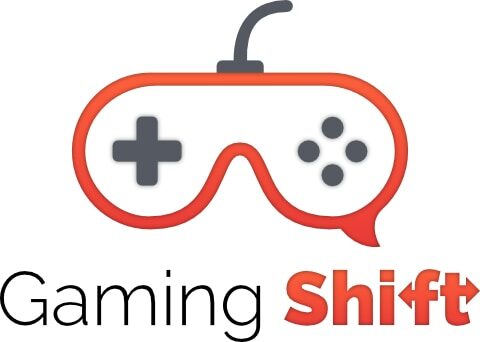DOS gaming from the 1980s and early to mid-1990s is an era often overlooked when people talk about early first-person shooters. Everyone thinks FPS only became a thing after Windows and DirectX went mainstream, but that’s far from the truth. DOS was just as good for high-octane FPS action as it was for puzzle and adventure games.
To revisit and celebrate this oft-forgotten era of FPS gaming, here are the 15 best DOS FPS games that you must play. You have the classics like Doom and Wolfenstein 3D, these are pure shooters with awesome music and loads of bad guys to kill. However, I’ve also included a few games that mix and match genres to create truly unique experiences you won’t find anywhere else.
Doom

Doom’s success owes as much to its ingenious art design, as it does to the headbanging heavy metal soundtrack. The game’s levels are designed to be a cross between the sci-fi horror world of Alien, and the hellscape of Evil Dead. You’re armed with a small arsenal of murder paraphernalia, including classics like the chainsaw and double-barrel shotgun.
As your nameless space marine claws his way through one demonic level after another, the enemies begin to get progressively stronger. Along the way, you find some amazing weapons like the BFG (take two guesses what that abbreviation means) which can clear out an entire room with one shot.
Wolfenstein 3D

The predecessor to Doom, Wolfenstein 3D evolved from the game “Castle Wolfenstein”, which was originally released on Apple II. Instead of the stealth mechanics present in the 2D action adventure it’s based on, Wolfenstein 3D embraces action and sci-fi. Most of the nazis in Castle Wolfenstein are regular people, armed with rifles and submachine guns.
But you’ll occasionally come across cybernetically enhanced nazis, giant attack dogs, and various other evil contraptions that wouldn’t feel out of place in a James Bond movie. And the game culminates in a fight against Adolf Hitler in a mech suit, under the Reichstag. Needless to say, Wolfenstein 3D has plenty of blood and gore (which feels impactful even to this day).
Quake

Just as Doom was an evolution of Wolfenstein 3D with faster-paced shooting and more outlandish enemy designs, Quake is an advancement of Doom- with a much larger focus on multiplayer. Featuring music by Nine Inch Nails and eerie-looking levels inspired by medieval gothic art, Quake is darker and grittier than Doom. The game has both single-player and local multiplayer.
What really sells the game, however, isn’t its wide and varied selection of weapons (which are amazing) or the unique gothic aesthetic. Instead, it’s the way you can move and how the physics works. Quake lets you rocket jump, bunny hop, and change direction while you’re flying in the air, making it the first-ever “movement shooter”.
System Shock

System Shock isn’t your traditional FPS. It’s not a game in which you take out hordes of bad guys with your overpowered weaponry while feeling like a badass 1980s action movie hero. Instead, you’re forced to feel like the weak underdog as you cautiously tiptoe around a derelict space station, listening to audio logs and trying to figure out what happened.
Apart from space zombies and robots, you’re also being hunted by a rogue AI known as SHODAN who also happens to have a god complex. SHODAN wants you dead and will use the spaceship’s various systems against you. Enemies are few and far between, but the tension is high since you’re often armed with nothing more than a pistol and crowbar.
Heretic

Imagine Doom, but with roleplaying elements lifted straight out of Dungeons and Dragons. Heretic uses the Doom engine but adds several new features. For starters, you now have an inventory and the ability to use magical artifacts that give your weapons a secondary firing mode with much more powerful attacks. You can also look up and down, and the levels are often designed with an element of verticality to take advantage of this feature.
Some of the levels will contain interactive elements, like streams of water that can carry you away. Weapons in Heretic perform similar functions to those of weapons in Doom but also have new and unique abilities. Instead of shotguns and rocket launchers, you’ve got claws, wands, bows, and staffs.
Terra Nova: Strike Force Centauri

It’s like Titanfall, except this game was released in 1996- 18 years before Titanfall, and probably older than half of Titanfall’s player base. As for the story, it’s a weird mishmash of science fiction tropes and cold-war politics. In Terra Nova, a faction of humans escape the solar system to colonize Alpha Centauri, because Earth has been taken over by a totalitarian socialist government.
In terms of gameplay, it’s very similar to MechWarrior 2, each motion of your mech suit feels weighted and tactile. You fight other mechs and vehicles in a massive 3D landscape full of divergent terrain features such as hills, lakes, forests, etc.
Each mech comes with a wide range of weaponry, ranging from missiles and lasers to autocannons. You can have up to 3 AI teammates on your side, and each one of them can be given tactical commands (stop, rush, patrol, etc.).
Duke Nukem 3D

Aliens are invading the Earth, and it’s up to the Duke to stop them. If you like 1980s Hollywood action movies, sex jokes, and gratuitous amounts of gore, this game still has the potential to entertain in the current year. Its level design is very different from MechWarrior 2 or Terra Nova, which makes sense because Duke Nukem is not a tactical mech sim.
Instead, it’s a power fantasy with a cigar-chomping badass who wields giant guns. Duke saves beautiful women from alien strongholds, flipping the middle finger as explosions go off in the background. The game contains plenty of power-ups and interactable objects in the environment, and each level is designed so that you have multiple paths for any given objective.
Descent

Doom was a revolutionary game by 1993 standards, but it wasn’t true 3D. Many games inspired by Doom managed to correct this by embracing full 3D, thanks to advancements in graphics processing. One of these games was Descent, which some consider to be the first “fully 3D” FPS.
It has six degrees of freedom, only possible if your object is rendered in 3 axis (3D). The gameplay in Descent resembles that of an early 1980s 2D shoot ‘em up but from a first-person perspective. You pilot a spaceship through off-world mines, blowing up robots that have been infected by a computer virus.
Star Wars: Dark Forces

Set a year after the first Star Wars movie (original trilogy), Dark Forces tells the story of Kyle Katam. A Rebel Alliance merc who stumbles upon a secret project of the Empire, known only as “Dark Trooper”. The Dark Trooper project aims to create new battle droids and stormtroopers with power armor to significantly enhance their fighting ability.
The game’s plot revolves around Kyle’s journey to shut down the Dark Trooper program. The gameplay is like that of any linear FPS from the mid-1990s, with plenty of droids and stormtroopers for you to destroy. Levels are massive and beautiful, taking place in a variety of familiar locations- Star Destroyer, Jabba the Hutt’s yacht, etc.
Blood

A dark fantasy game in which the protagonist, an undead 20th-century Wild West outlaw, is seeking revenge against his former master- a god of the underworld. It’s responsible for many of the video game censorship movements that took place during the 1990s, with parents claiming that games such as Doom and Blood were “demonic”. That they were turning kids into cultists, Satan worshippers, etc.
Sure, Blood has plenty of gore and blood (duh) but it’s nothing more than an edgy FPS with an eerie and gritty atmosphere. Oh, and it’s also really, really, difficult. Not all is dark and serious, the game also has its moments of humor and contains several pop-culture references.
Shadow Warrior

Kung Fu movies have been one of my guilty pleasures since I was a child, and I suspect many of you reading this article love them as well. 3D Realms took a Kung Fu movie, combined it with a Hollywood action movie, and packaged the whole idea as a 3D FPS. Released in 1997, Shadow Warrior is one of the most entertaining shooters.
Shadow Warrior got so many things right on the first try, it’s like Duke Nukem 3D but with even more depth and a larger number of interactable objects in the environment. The innovative room-over-room level layout makes it feel like you’re fighting through an enemy fortress, climbing your way toward the final boss like in a Castlevania game. You can drive vehicles, dual-wield machine guns, and throw ninja stars- 1990s FPS gaming doesn’t get much better than this.
Chasm: The Rift

Not every FPS game in the 1990s was unique or innovative, most were either shovelware or DOOM clones. However, every once in a while, we got games like Chasm: The Rift that pushed new boundaries in terms of gameplay and level design. While Doom and Blood reveled in gore and demonic themes, Chasm: The Rift combined science fiction with monster hunting.
In this game, you’re a special forces commando tasked with preventing a mutant invasion of Earth. However, these mutants are time travelers and are invading Earth from different epochs distributed throughout our history.
You travel to different time periods and take out these mutants one by one. Levels range from tombs in ancient Egypt to Aztec ruins and even current-day military facilities.
Strife

Much like System Shock, Strife merges two different genres- FPS and RPG. However, it leans much more into the Ultima Underworld style of roleplaying rather than the sci-fi horror trappings of System Shock. Strife features a combination of old weaponry along with new stuff- this is a world where crossbows and swords exist alongside machine guns and attack robots.
Hexen: Beyond Heretic

Developed by Raven and published by id Software, Hexen is a sequel to the dark fantasy FPS Heretic. You play as one of three heroes destined to defeat Korax, the Serpent Rider. What makes Hexen unique is its use of character classes, there are three in total, each with access to a unique combination of weapons and perks.
Blam! Machinehead

A game as weird as it is stylish, Blam! Machinehead is about a scientist who’s created a special vehicle to defeat a nanomachine infestation that’s taken over the world. You’re given tasks by a creepy assistant via video calls, and these sequences are portrayed as FMV cutscenes. Your vehicle is equipped with dual autocannons and missile launchers.
Conclusion
DOS FPS games manage to do so much with so little, some of these aren’t even “proper” 3D and use basic MIDI soundtracks. No cinematic cutscenes, voiced dialogue, or shoehorned RPG mechanics like crafting. You just got a cigar-chomping, one-liner-dispensing badass with a gun the size of Texas, and endless waves of despicable monsters to mow down.
For a long time, that’s all an FPS player needed to have fun. As technology advanced, so did our expectations and game developers followed along, trying to give us everything we could possibly ask for. But somewhere along the way, in the pursuit of doing everything, modern FPS games have lost track of their core identity and what it means to just have fun.
If you found this article useful, you may want to save this pin below to your Gaming board.

